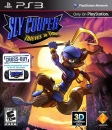| EricHiggin said: I think the "biggest leap ever" marketing is a bluff. Maybe not, but that's my guess. I think if MS doesn't cancel the next gen kits, that there will be 2 pieces of XB hardware again. The main goal will be to pretty much unify the hardware so they don't have the Series S/X problem anymore. One will be a Series X level performance console, give or take, with new tech baked in and on an updated manufacturing process. The other will have similar hardware and performance, give or take, and will be a handheld hybrid. The console would likely be $400. The handheld hybrid $500. With so many saying PS6 will be $600, MS will have two pieces of XB hardware that are cheaper than a PS6, landing in the "sweet spot". Both will launch holiday 2027 or holiday 2028. *Just so there's no confusion. I'm not saying the base hardware will be capable of raw 12TF. Think of it like PS5 Pro, where it has 16TF of raw performance, but clearly punches above that because of additional tech like PSSR. MS would be able to make like 8TF hardware, yet get performance like a Series X using hardware and software tech advancements over the next 2-3 years. |
The "biggest leap ever" won't feel like a big leap at all.
It might be on paper, but we're already at the edge of a perceivable increase in resolution and fidelity. People are not going to buy 120" 8K TVs, 65" to 80" 4K is the upper limit atm, as well as having a screen in front of you occupying more than 40 degrees of your FoV is not comfortable for most people. At that fov, 3600x2025 is the very upper limit of what you can perceive (20:15 vision, 90 ppd), less than 4K.
Everything in 60fps is not that big of a leap either, that's what ps5 pro is doing now. And higher than 60 frame rates are for enthusiasts. Most people don't even care about 30 or 60.
Fidelity is already at the maximum level of comfort, so that only leaves lighting and physics to be the "biggest leap ever"
Well ray tracing is certainly great for developers, yet the difference with pre-baked lighting and reflections is not that revolutionary. In fact some have issues with the extra amount of visual stimuli that introduces. Can't see anymore because all the reflections...
That leaves physics for "biggest leap ever". Yet again, that will be mostly on paper. There are plenty physics games, and physics can get messy real quick. Again adding to the clutter modern games already suffer from.
Next to, how do you right good stories / gameplay for fully destructible or changing worlds. Better world simulations would be a huge leap, changing worlds, growing, flooding, land slides, snow accumulation. But you still need your quests to be able to work and that will become a lot more tricky instead of simply changing the time of day / weather for a mission.
And overall, diminishing returns keep 'plaguing' 'progress'. It simply won't look like a leap at all in screenshots. Plus the move to streaming from the cloud means all that extra fidelity and finesse gets lost in compression. So why would developers concentrate on details only a small minority gets to see while the vast majority is streaming those games at 720p / 1080p, 30 or 60 fps. (Or bit starved 4K60, uncompressed 4K60 is 7.4 Gbps after chroma subsampling)
Ehh you can see it with the latest 5090, diminishing returns. That's a $2000 GPU, AI spit and polish are not going to make a giant leap over that.
Best they can do for a premium console is not skimp on memory, fast and a lot of it. 32GB RAM.
One untapped market is the (no fuss) home entertainment system. Replicate what the cloud does locally without internet dependence. One main premium XBox that can serve multiple receivers around the house. Basically a PC in a box that can run multiple games simultaneously.
Add split-screen options to play 2 instances of the same game on the same TV and you have a game changer. Imagine suddenly you can play any multiplayer game you buy with 2 players locally on the same TV (or 2 TVs), for the price of one copy (or subscription).
They can do that with streaming as well of course, but it's already tricky enough to stream one game from the cloud, let alone multiple players at the same time.
XBox Blade: serves as XBox server in the house, install all digital games on it.
XBox Play: receiver that either streams from XBox Blade or streams from the Cloud.
Now you have the choice to use the XBox Blade for a single game, maxing all its performance for just your own experience. Or use it to run multiple instances of the same or different games to play together or play different games at better fidelity than from the cloud.




















